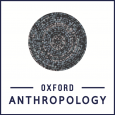Ethno-ecology
Multispecies Ethnography
Creatures previously appearing on the margins of anthropology—as part of the landscape, as food for humans, as symbols—have been pressed into the foreground in recent ethnographies. Animals, plants, fungi, and microbes once confined in anthropological accounts to the realm of “bare life”—that which is killable—have started to gain legibly biographical and political lives. Amid apocalyptic tales about environmental destruction, anthropologists are beginning to find modest examples of biocultural hope—writing of insect love, of delectable mushrooms that flourish in the aftermath of ecological destruction, and of microbial cultures enlivening the politics and value of food.
“The Emergence of Multispecies Ethnography,” an article by Oxford anthropologist Eben Kirksey and Stefan Helmreich, pioneered new methodological and theoretical approaches for studying how people interact with other creatures. Since this initial intervention, anthropologists have used multispecies methods to study the forms of life that are proliferating in laboratories as well as conservation efforts aimed at “saving” creatures that live in times of extinction.
Informal sanitation infrastructure in Kurasini, Dar es Salaam. Photo by Ann H. Kelly and Javier Lezaun.
Oxford anthropologists have played a leading role in using multispecies approaches to understand key issues related to medical anthropology and the ecology of disease. Javier Lezaun, who is Director of the Institute for Science, Innovation, and Society, used the lens of multispecies ethnography to follow people and mosquito larvae in the urban built environment of Dar es Salaam. Human infrastructure is related to the epidemiology of malaria and Lezaun followed local volunteers who were becoming experts on mosquito breeding by conducting surveys of mosquito habitats, clearing drains, and removing bodies of stagnant water. Currently Eben Kirksey is studying the interactions of bats, coronaviruses, monkeys, and people at Thai Buddhist temples in the context “getting lucky” with viral exposures.
Lys Alcayna-Stevens conducted one of the earliest attempts at an ethnographic study of non-humans – a study which sought to expand theoretical understandings of ‘the social’ in order to understand the social and affective relations between chimpanzees and their human keepers in a Catalonian chimpanzee sanctuary, and to understand the multi-faceted nature of these relationships. As part of this research on post-human anthropologies, she also challenged anthropological assumptions about the ways in which Europeans and Americans perceive and relate to nature and to non-human beings, resulting in a special issue on ‘Euroamerican naturalisms.’ Since then, she has worked with colleagues at the Laboratoire d’Anthropologie Sociale in Paris to develop approaches to human-animal relations and to ‘Anthropologies of Primatology.’ She has also studied the relationships between scientists and wild apes at a research site in the Democratic Republic of Congo, focusing on practices of ‘habitation’ and engaging with feminist geographies of environmental crisis, in order to conceptualize sociality beyond the human , rethink the kinds of labour required to conduct scientific research, and theorize modes of thinking and relating which are embodied, introspective and uncertain. Most recently, she has worked on zoonotic disease epidemics in central Africa with colleagues at the Institut Pasteur in Paris – a project which seeks to attend to the historical, social, and political relations between humans, apes, and viruses.
Thomas Cousins, who is the Director of Oxford’s Institute for Social and Cultural Anthropology (ISCA), has been using a trans-species approach to understand urban animals, human livelihoods, and health in the global south. He studies the microbiome and non-human relations in the context of the governance of life. His research in medical anthropology approaches questions about living with viruses and bacteria through projects that situate human health in lively landscapes. His most recent book, The Work of Repair: Amandla and Capacity in the Timber Plantations of South Africa, considers the nurturing of capacity across all domains of life―physical, relational, cosmological.
Spiders, crabs, and other technologies of future divination have been studied by Professor David Zeitlyn in the borderlands of Cameroon and Nigeria. Rumors of hybrid creatures—leopards that can undergo metamorphosis into men——feature in the work of Professor David Pratten, who is Head of School. The Man-Leopard Murders is an account of the cosmological and ontological uncertainty that proliferated in colonial Nigeria, as indigenous intellectuals and government officials tried to bring justice to a series of murder mysteries.
Justice and injustice were themes in multispecies ethnography since the beginning of the field, even though these concerns were ancillary to the foundational texts rather than the central focus. Intersectional political movements and research practices are starting to simultaneously address issues related to social justice, rights of nature, transformative justice, climate change, and interspecies care. A new book, edited by Eben Kirksey and Oxford alum Sophie Chao, The Promise of Multispecies Justice, asks: whose lives matter in multispecies worlds?
“Justice at the End of Worlds” by Feifei Zhou (2022)



